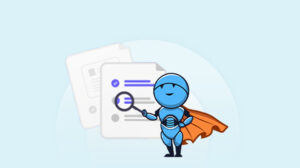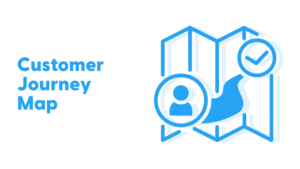Customer acquisition cost (CAC) is a metric that measures the amount that a company spends to acquire a new customer.
Managing and Understanding CAC is Important for Businesses for Several Reasons:
- It helps businesses understand the efficiency of their customer acquisition efforts. By tracking CAC over time, businesses can see whether their customer acquisition efforts are becoming more or less efficient and make adjustments as needed.
- It allows businesses to identify areas for improvement. By understanding the components of CAC, businesses can identify which activities are contributing the most to the cost of acquiring a new customer and focus on optimizing or streamlining those activities.
- It helps businesses make informed decisions about marketing and sales budgets. By understanding the cost of acquiring a new customer, businesses can determine how much they can afford to spend on marketing and sales efforts and allocate their budgets accordingly.
- It helps businesses forecast future growth. By understanding CAC, businesses can make more accurate projections about the number of new customers they can expect to acquire, and the associated costs. This can be helpful for planning purposes and for setting business goals.
How to Calculate CAC
To calculate Customer Acquisition Cost (CAC), you will need to know the total cost of acquiring a new customer and the total number of customers acquired during a specific period.
You can then use the following formula to calculate CAC:
CAC = Total cost of customer acquisition / Number of customers acquired
Factors that Contribute to CAC
Here are some common business functions and the associated costs that may be included in the calculation of CAC:
Marketing: Advertising, public relations, lead generation, content creation, social media management, market research
Sales: Sales salaries and commissions, sales training, sales tools and technology
Product development and distribution: Research and development, manufacturing, warehousing and distribution, inventory management
Administrative expenses: Rent, utilities, insurance, legal fees, accounting, office supplies
These costs may vary depending on the specific business and its customer acquisition strategies. It’s important to accurately track and measure these costs to calculate CAC accurately.
For example, let’s say a company spends a total of $50,000 on marketing and sales efforts to acquire 100 new customers in a month. The CAC for that month would be:
CAC = $50,000 / 100 customers = $500 per customer
This means that it cost the company an average of $500 to acquire each of the 100 new customers.
It’s important to note that the total cost of customer acquisition may include all expenses related to acquiring new customers, such as marketing and advertising costs, sales commissions, and any other relevant expenses.
Additionally, it may be helpful to calculate CAC on a regular basis, such as monthly or quarterly, to track trends and identify opportunities for improvement.
In general, a lower CAC is considered more favorable, as it indicates that the company can acquire new customers at a lower cost.
Also, read:
Strategies for Reducing CAC
Here are 14 strategies that businesses can use to reduce CAC:
- Optimize advertising campaigns: By analyzing data on the effectiveness of different ad campaigns and making adjustments accordingly, businesses can reduce the cost of acquiring new customers through advertising.
- Improve lead generation processes: By streamlining lead generation processes and implementing lead nurturing campaigns, businesses can more efficiently convert leads into paying customers, reducing CAC.
- Streamline the sales process: By simplifying and automating the sales process, businesses can reduce the time and effort required to close deals, which can lower CAC.
- Improve the customer experience: By delivering a positive customer experience, businesses can increase customer loyalty and retention, which can offset the initial cost of acquiring a new customer.
- Leverage low-cost marketing channels: By utilizing low-cost marketing channels such as social media, content marketing, and email marketing, businesses can reach new customers at a lower cost.
- Increase customer lifetime value: By increasing the lifetime value of a customer, businesses can offset the initial cost of acquiring that customer. This might involve improving the customer experience, introducing new products or services, or upselling and cross-selling to existing customers.
- Utilize automation and technology: By leveraging automation and technology, businesses can reduce the time and effort required to acquire new customers, which can in turn reduce CAC.
- Negotiate better terms with suppliers: By negotiating better terms with suppliers, businesses can reduce the costs associated with product development and distribution, which can lower CAC.
- Focus on customer retention: By focusing on retaining existing customers, businesses can reduce the need to constantly acquire new customers, which can lower CAC over time.
- Experiment with pricing: By experimenting with different pricing strategies, businesses can find the pricing sweet spot that maximizes revenue and minimizes CAC.
- Implement a referral program: By implementing a referral program, businesses can acquire new customers through word-of-mouth recommendations, which can be a low-cost way to acquire new customers.
- Utilize data and analytics: By analyzing data on customer acquisition and spending patterns, businesses can identify opportunities to optimize their marketing and sales efforts and reduce CAC.
- Leverage partnerships and collaborations: By partnering with other businesses or collaborating on joint marketing and sales efforts, businesses can tap into new customer bases and potentially lower CAC.
Also, read:
Maximize the ROI from Customer Acquisition
There are many ways to maximize the return on investment (ROI) from customer acquisition, and the most effective strategies will depend on the specific circumstances of a business. Here are 10 examples of how businesses can maximize their ROI from customer acquisition:
- Identify the most valuable customers: By targeting the customers who are most likely to make repeat purchases or have a high lifetime value, businesses can optimize their marketing efforts and allocate resources more effectively. Read more – Customer Segmentation
- Optimize the customer acquisition funnel: By improving the efficiency of the process through which potential customers become paying customers, businesses can reduce the cost of acquiring each customer and increase their ROI.
- Upsell and cross-sell: Once a customer has made a purchase, businesses can maximize their ROI by offering related products or services that the customer may be interested in. This can help businesses increase the value of each customer and drive additional revenue. Read more – Customer Lifetime Value
- Retarget and re-engage: By using retargeting and re-engagement campaigns, businesses can reach out to potential customers who have expressed interest in their products or services but have not yet made a purchase. This can help increase the ROI of customer acquisition efforts by converting more of the initial leads into paying customers.
- Test and optimize marketing efforts: By constantly testing and optimizing marketing efforts, businesses can identify the most effective channels and tactics for acquiring new customers, and allocate resources accordingly. This can help maximize the ROI of customer acquisition efforts over time. Read more – Data driven marketing
- Offer incentives: By offering incentives such as discounts, free trials, or loyalty programs, businesses can encourage potential customers to make a purchase and maximize the ROI of their customer acquisition efforts.
- Leverage referrals: By encouraging existing customers to refer friends and family to the business, businesses can acquire new customers at a lower cost and increase the ROI of their customer acquisition efforts.
- Utilize social media: By building a strong presence on social media platforms and engaging with potential customers, businesses can reach a large audience and acquire new customers at a relatively low cost.
- Partner with other businesses: By partnering with complementary businesses, businesses can acquire new customers through joint marketing efforts and shared customer lists.
- Invest in customer service: By providing excellent customer service, businesses can reduce customer churn and increase the likelihood that they will make repeat purchases. This can help increase the ROI of customer acquisition efforts over time.
Importance of CAC in Budgeting & Forecasting
Here are a few ways in which CAC is important in budgeting and forecasting:
- Setting marketing budgets: By understanding the CAC, businesses can determine how much they can afford to spend on marketing and sales efforts in order to acquire new customers. This can help businesses allocate their marketing budgets more effectively and ensure that they are targeting the most cost-effective channels. Read more – How can CFOs gain more visibility into ROI from Marketing
- Determining pricing strategies: By understanding the CAC, businesses can determine how much they need to charge to achieve profitability. If the CAC is high, businesses may need to charge a higher price to offset the cost of acquiring new customers.
- Forecasting revenue and profitability: By understanding the CAC and the expected lifetime value of a customer, businesses can forecast their revenue and profitability over time. This can help businesses plan for future growth and make informed decisions about their marketing and sales efforts.
Challenges in Determining and Optimizing CAC
There are several challenges that businesses may face when trying to calculate and lower their CAC. Some of these challenges include:
- Limited data: Without a centralized data warehouse, it can be difficult for businesses to access all the data they need to accurately calculate their CAC. This can lead to incomplete or inaccurate calculations.
- Complex customer journeys: Customers may interact with a business through multiple channels, making it challenging to attribute the cost of acquiring them to a specific channel.
- Difficulty isolating the impact of individual marketing efforts: It can be difficult to determine the exact impact of individual marketing efforts on customer acquisition. This makes it challenging to determine the most effective channels and tactics for acquiring customers.
- Limited budget: Many businesses have limited budgets for customer acquisition, which can make it challenging to invest in new channels or tactics.
- Changing market conditions: External factors such as shifts in customer behavior or changes in the competitive landscape can impact a business’s ability to acquire customers.
- Different customer lifetime values: Customers may have different lifetime values, making it difficult to determine the most cost-effective acquisition channels. For example, a customer who makes frequent, high-value purchases may be more valuable in the long run, even if they are more expensive to acquire.
- Difficulty tracking CAC over time: It can be challenging for businesses to track their CAC over time, as it may fluctuate due to changes in market conditions, customer behavior, and other factors.
Conclusion
It is important for businesses to focus on lowering their CAC (customer acquisition cost) in order to drive growth and profitability. One effective way to do this is by identifying the most profitable acquisition channels and customers. However, to make informed decisions about these matters, it is crucial for businesses to have a strong data foundation in the form of a data warehouse. This allows them to consolidate all their data and use it to make data-driven decisions about their customer acquisition strategy.
If you want to effectively lower your CAC and drive growth for your business, consider partnering with Saras Analytics. Our team can provide end-to-end support and solutions for tracking customer journeys, consolidating data, and leveraging a data warehouse to automate the reporting of important business metrics. Let us help you make data-driven decisions about your customer acquisition strategy and achieve your business goals. Contact us today to learn more about how we can support your business.












